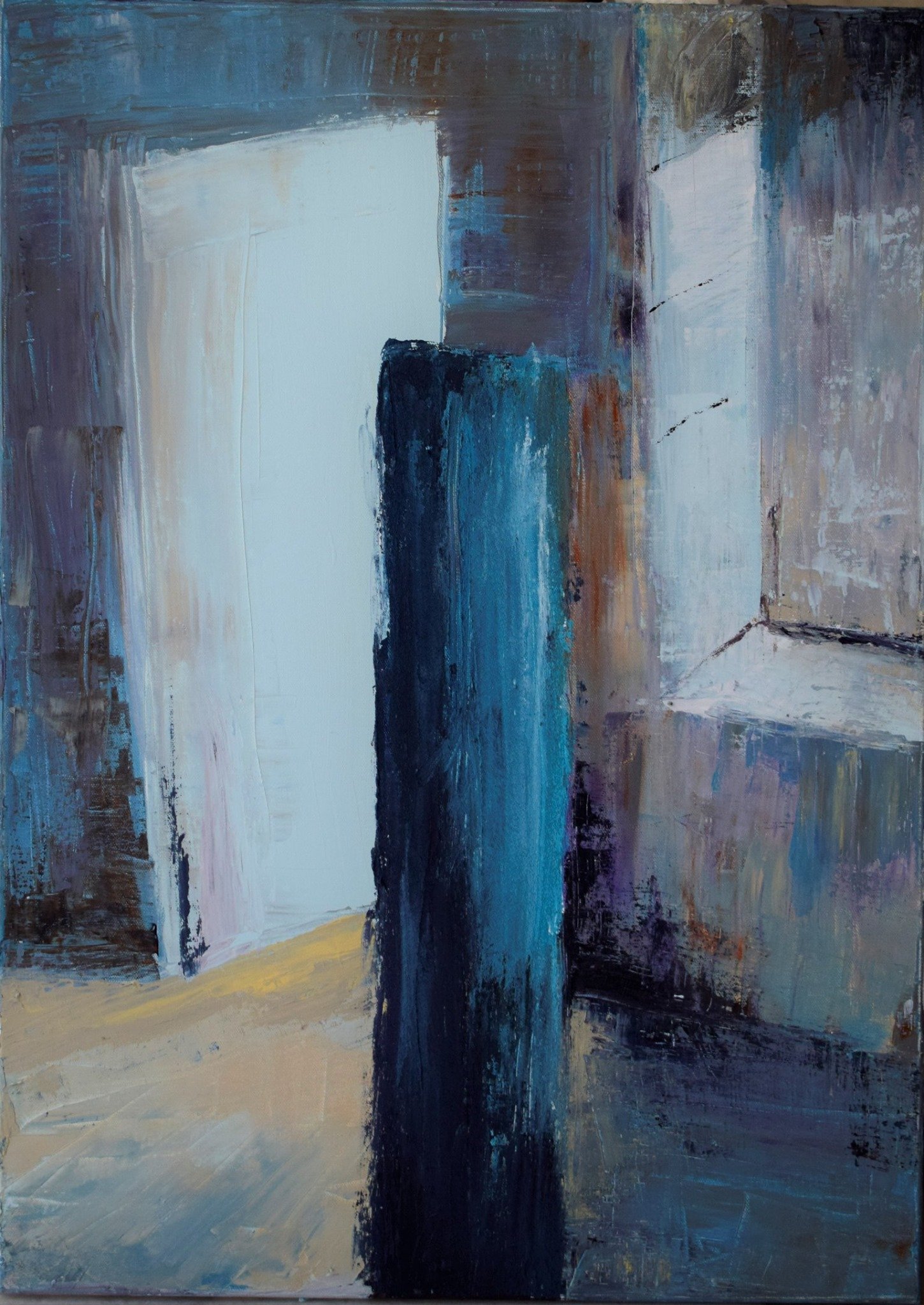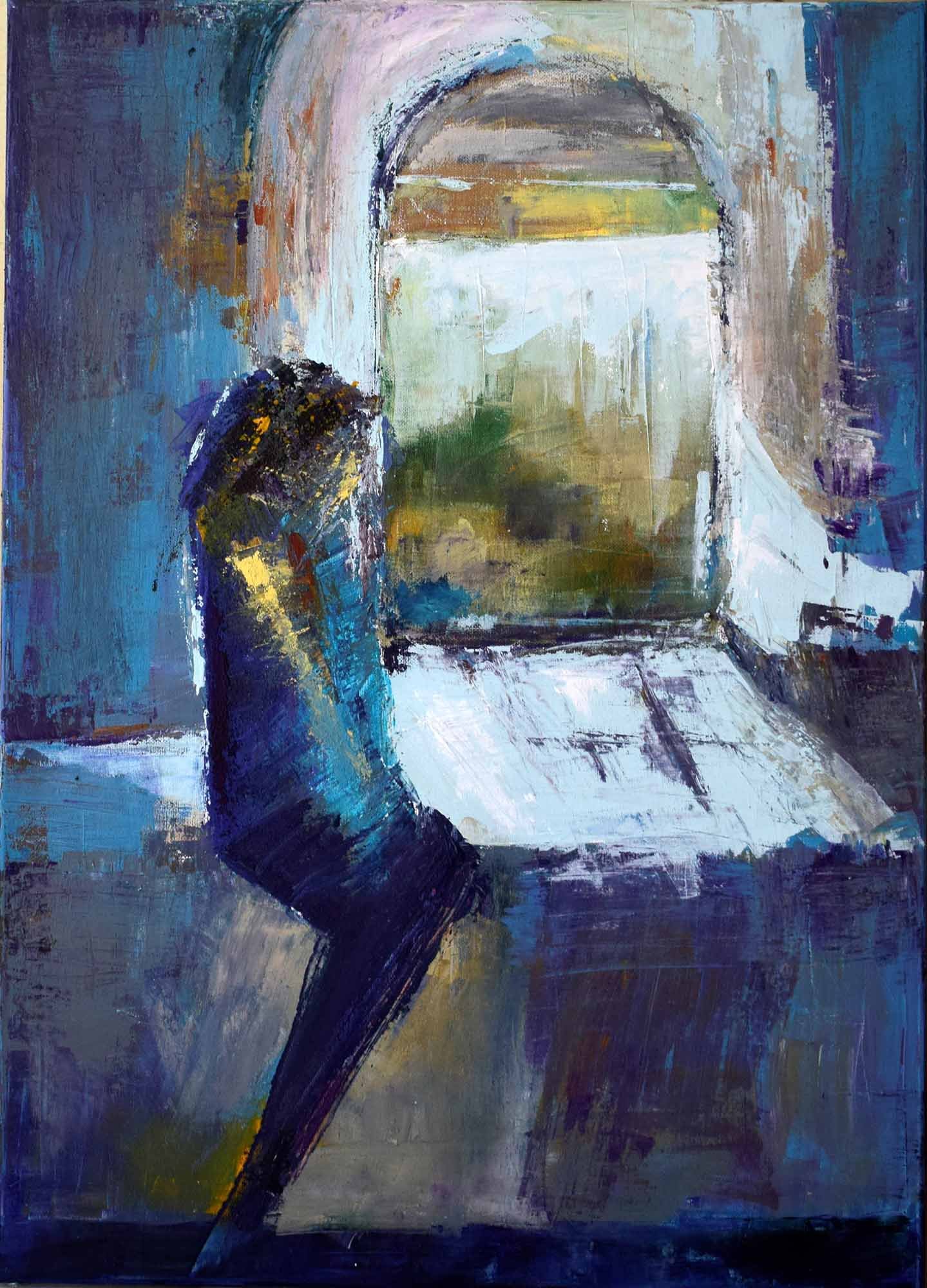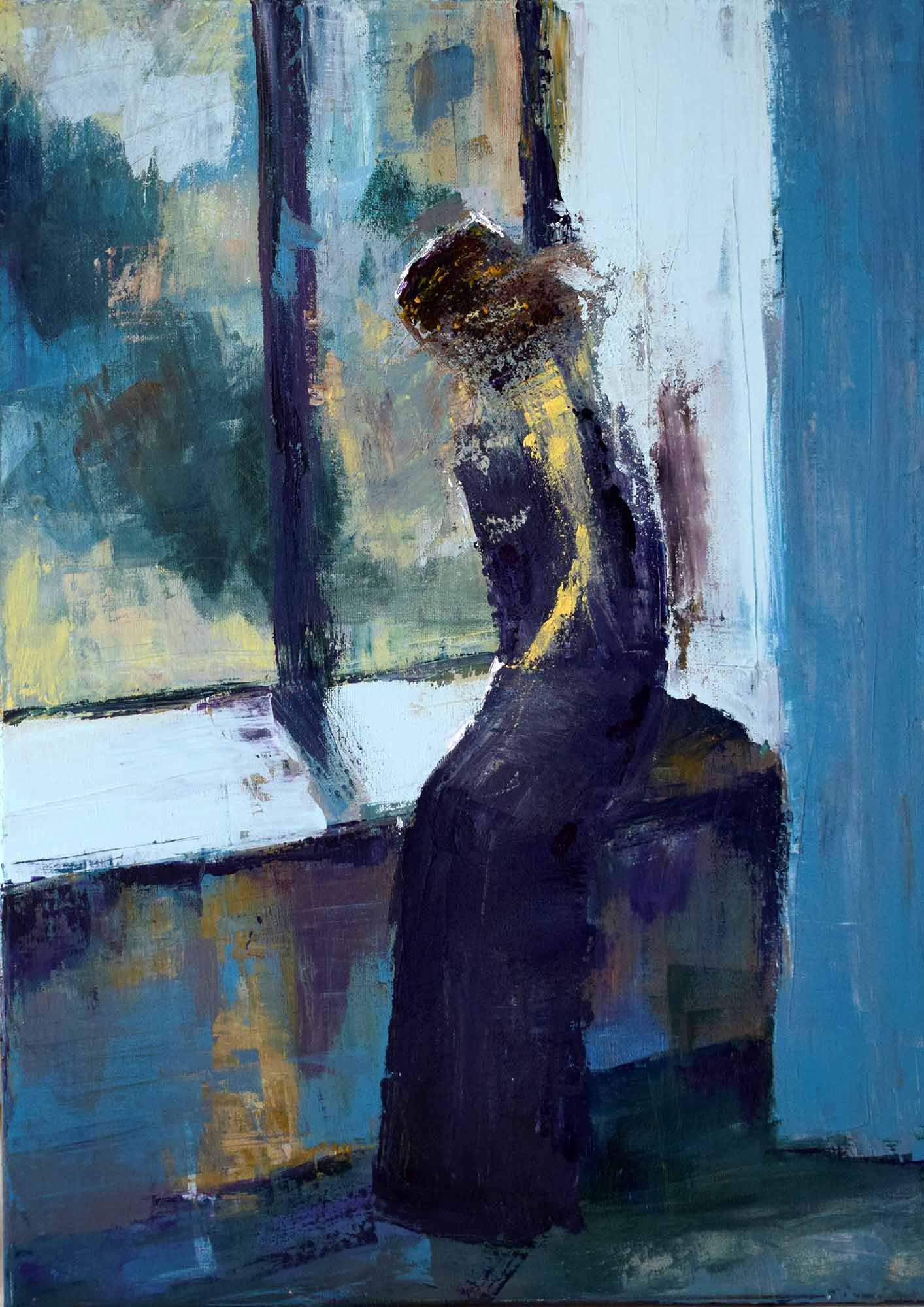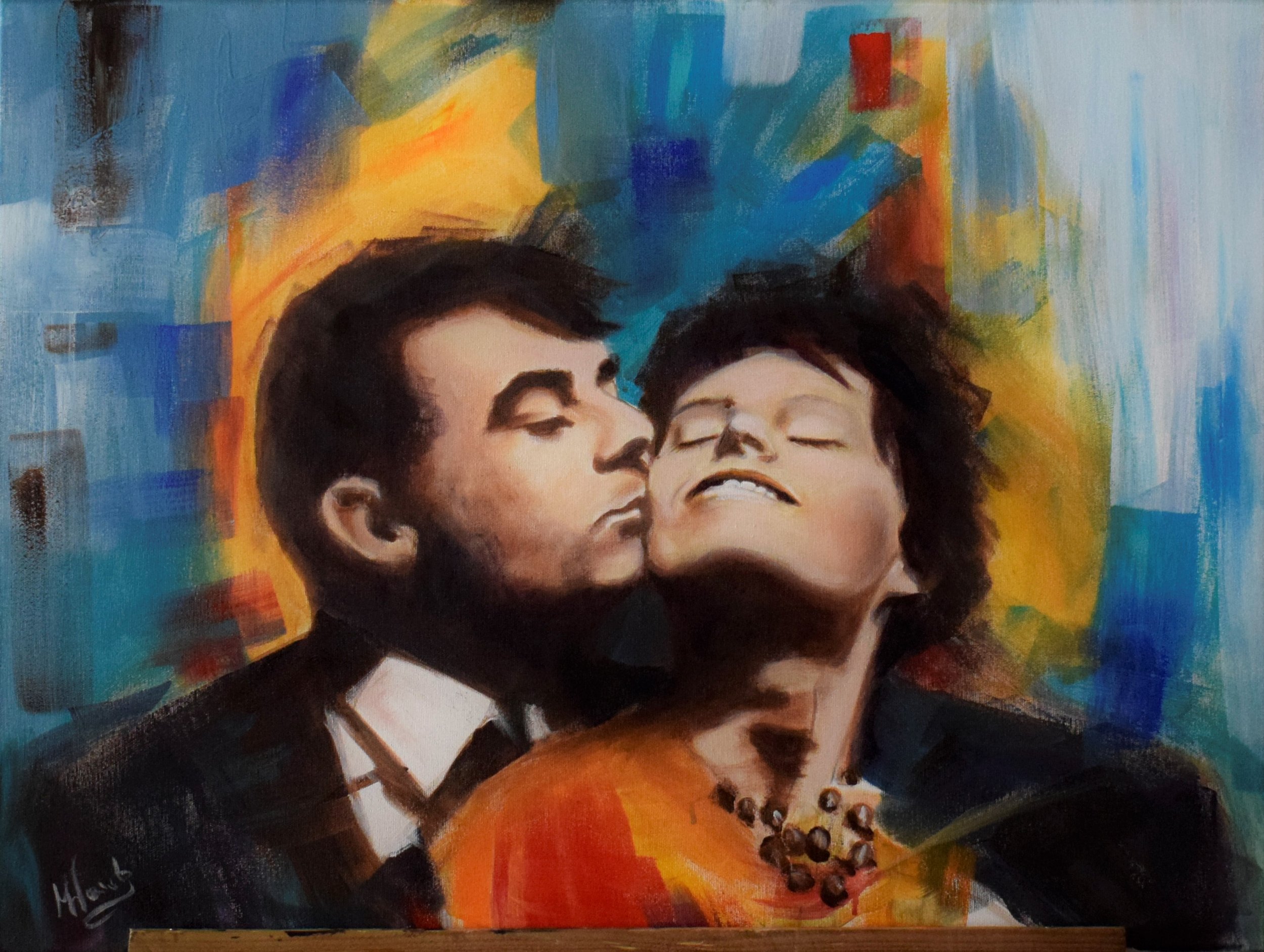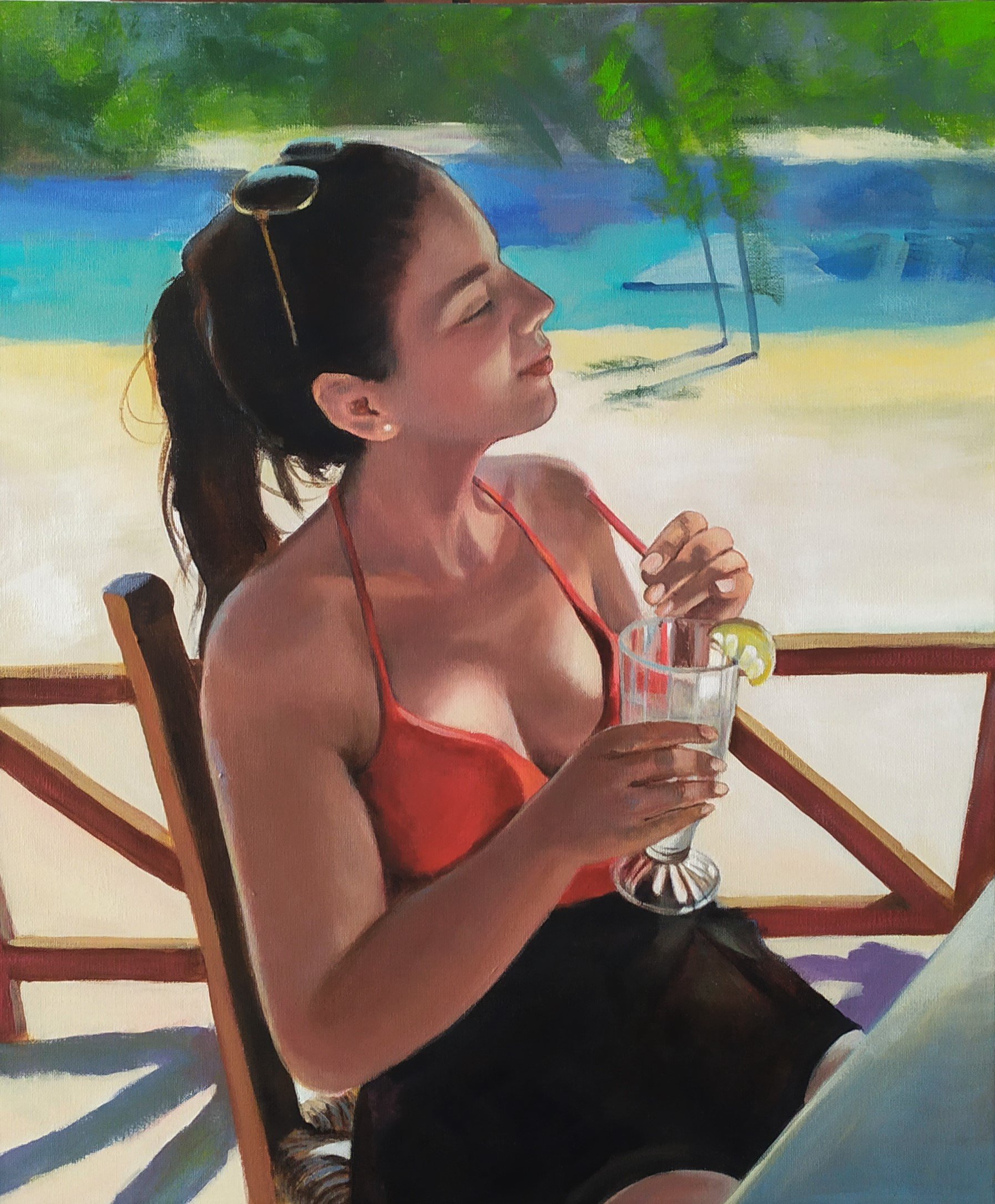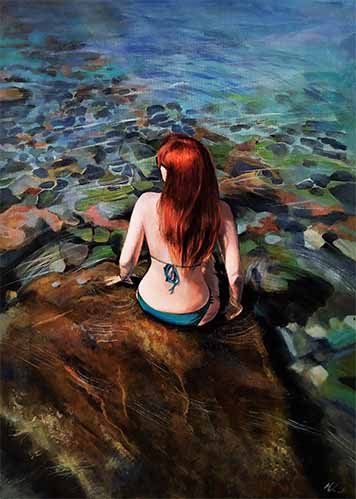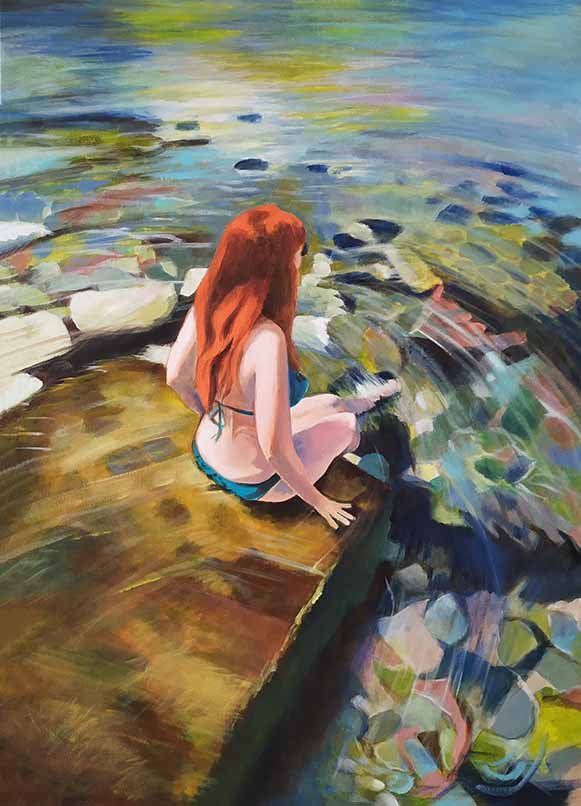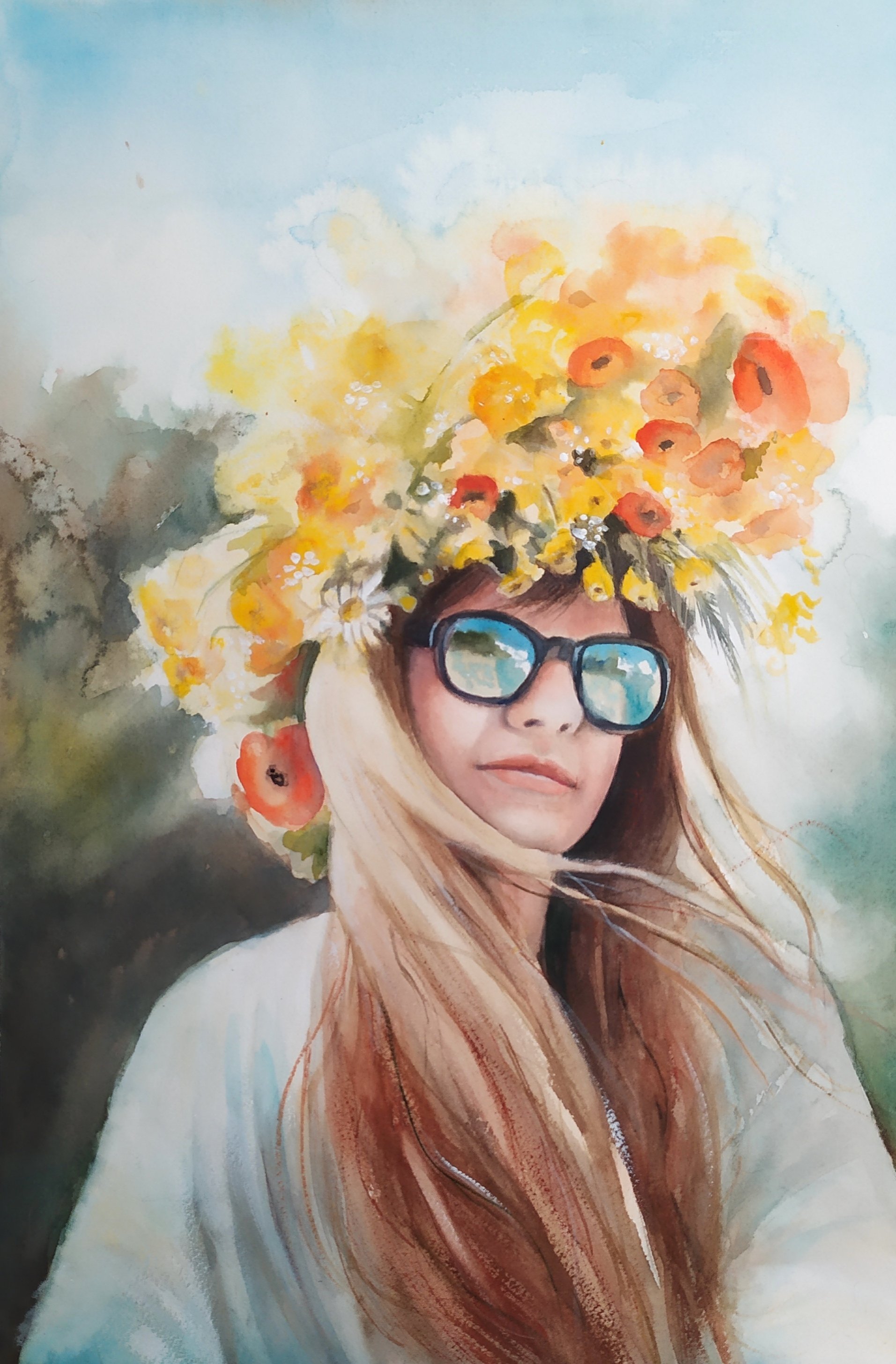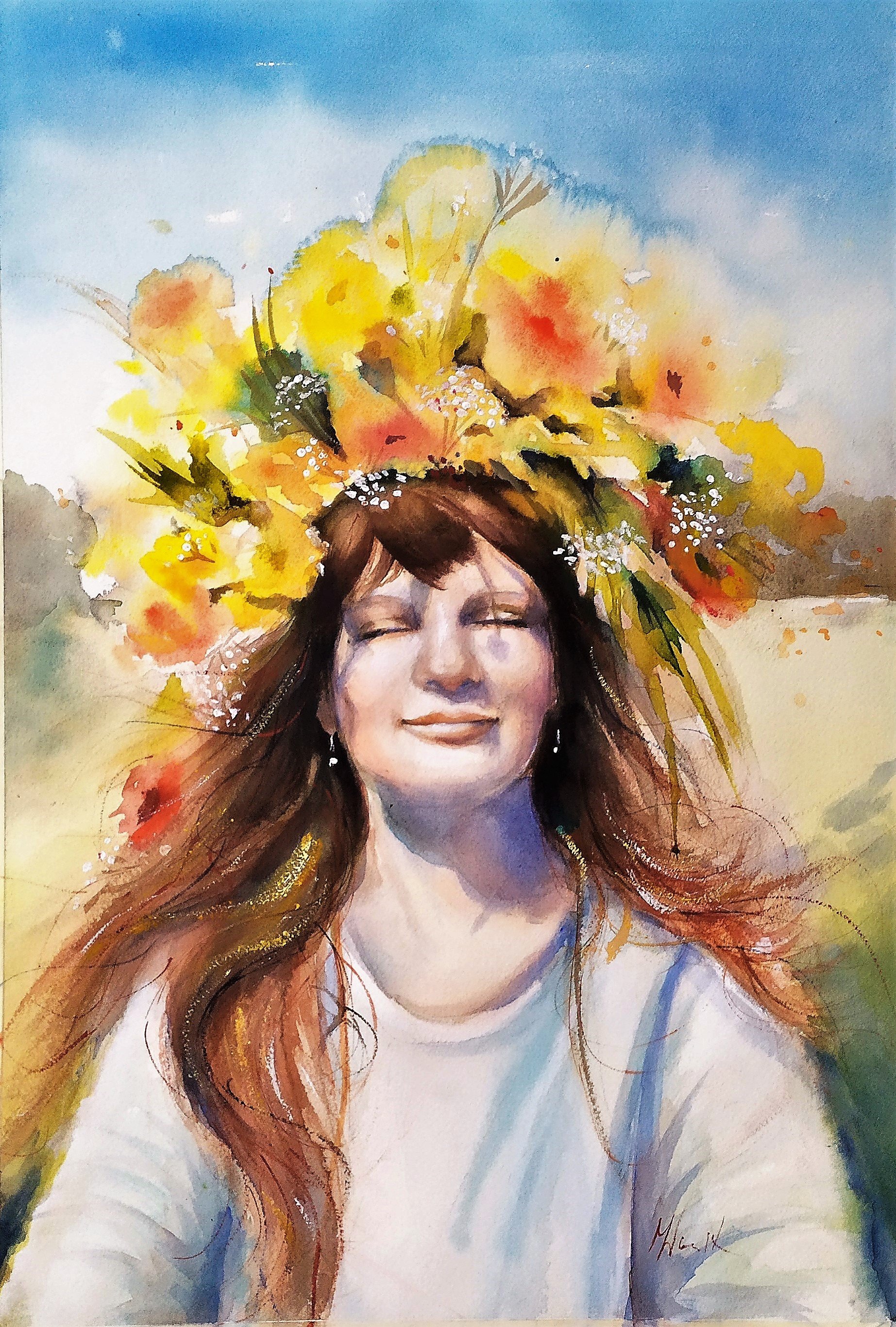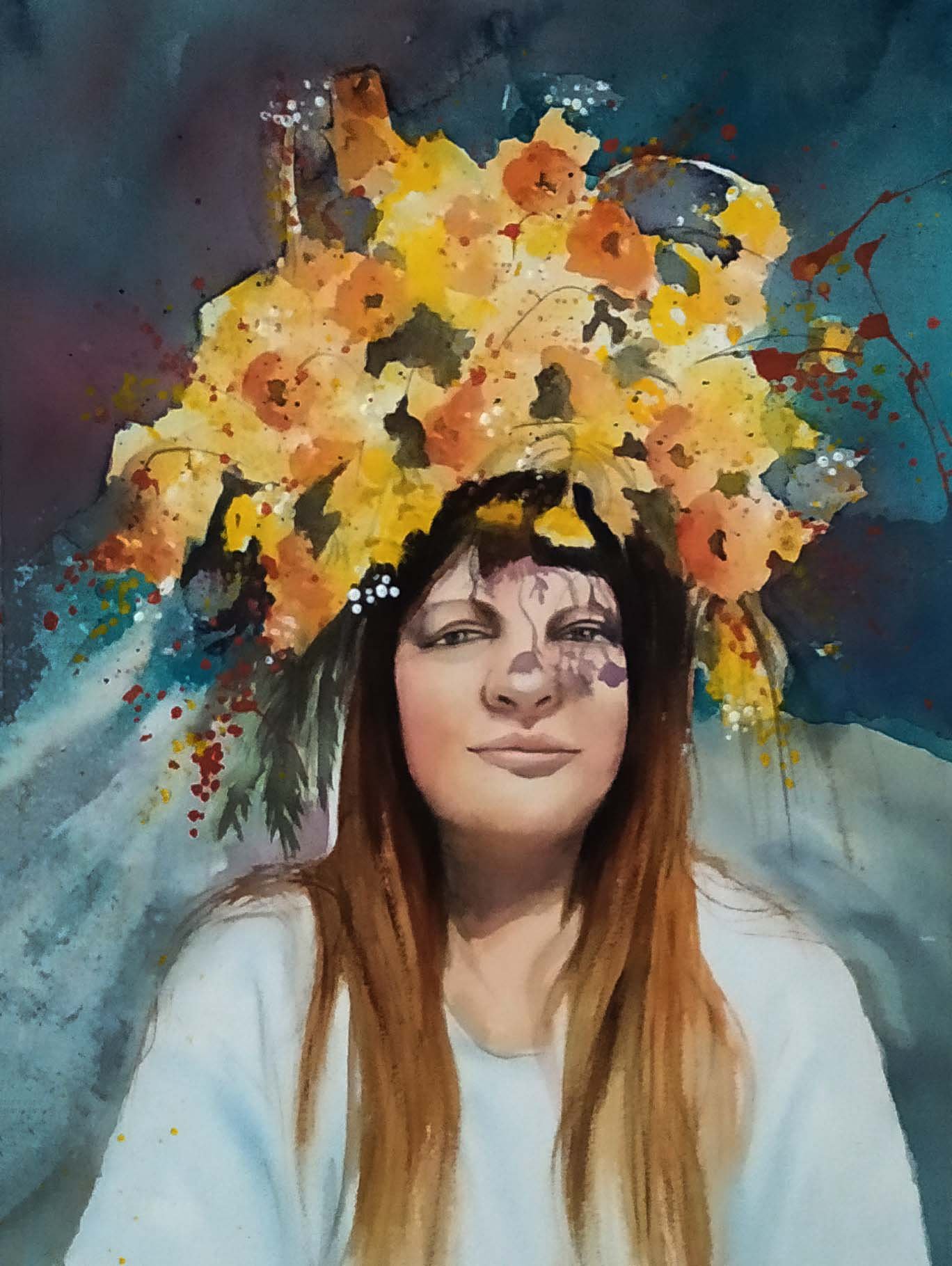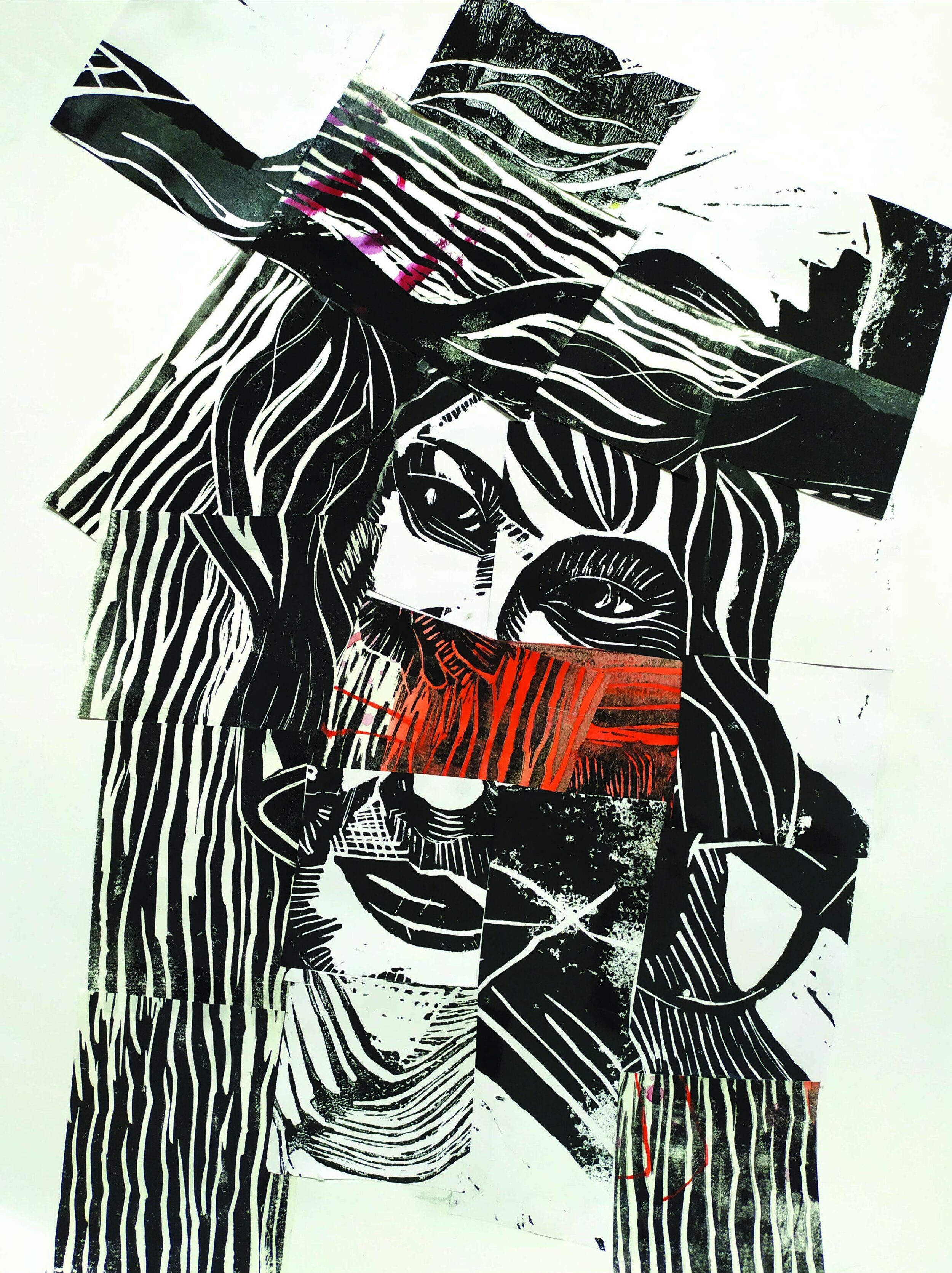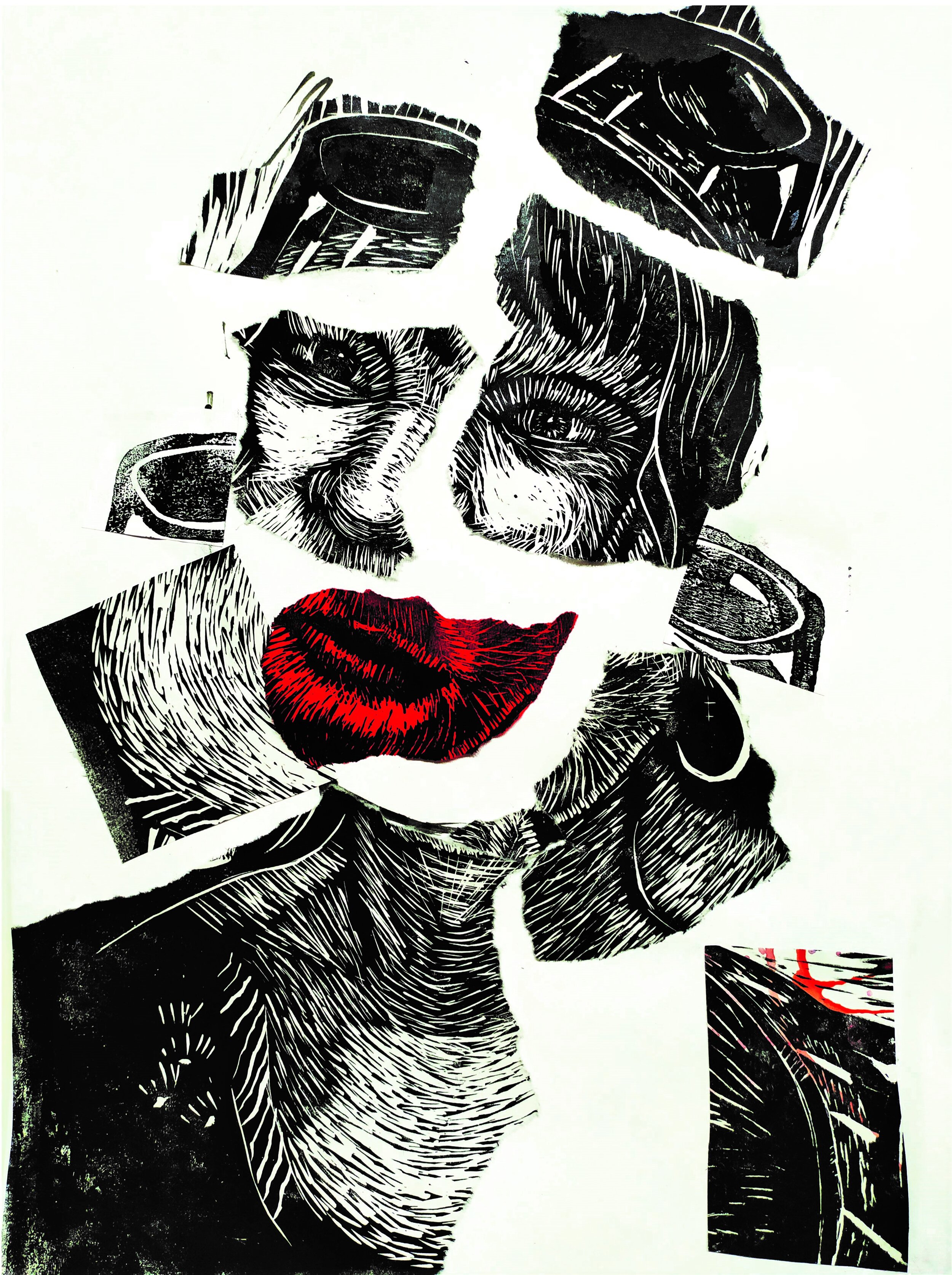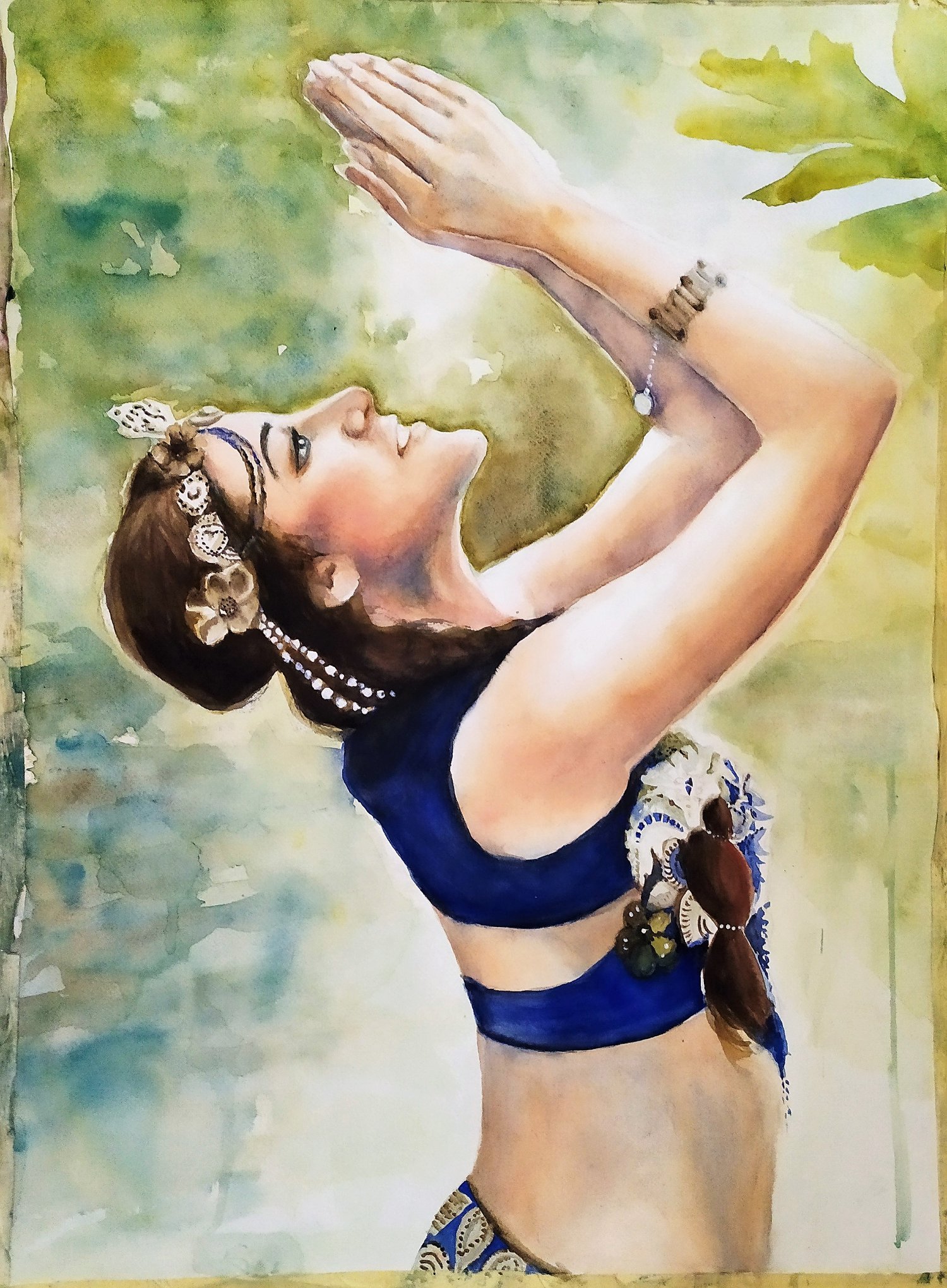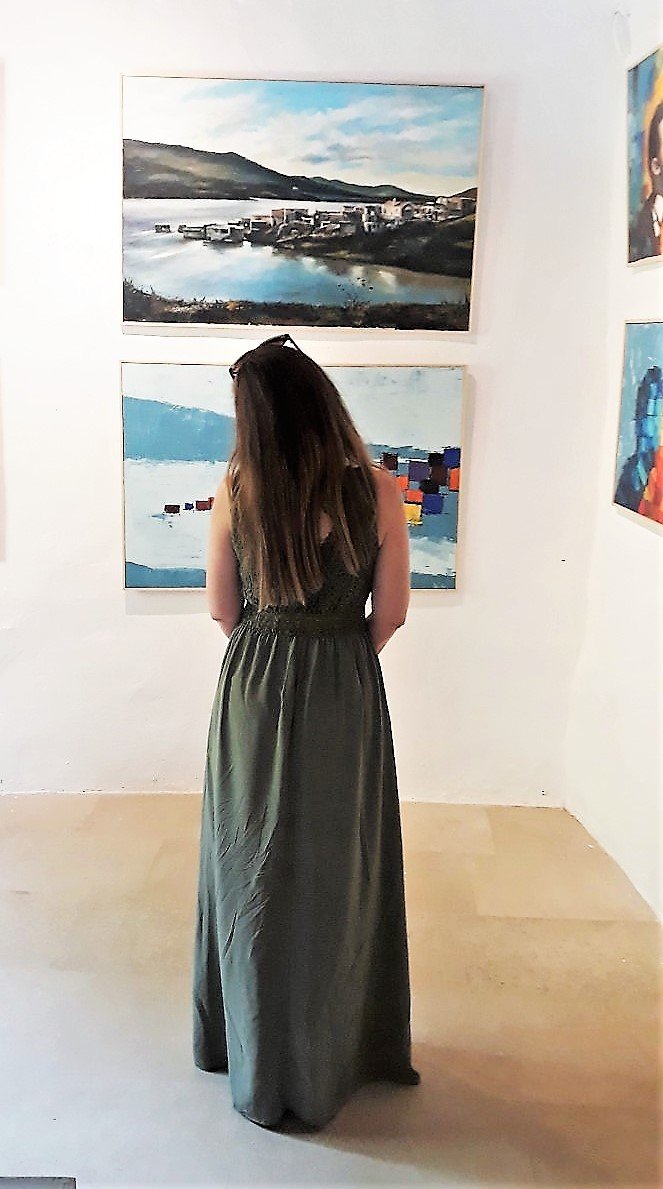Interview
Magdalena Melissourgaki Wozniak
Magdalena Wozniak Melissourgaki is a Polish Greek artist, whose talent and style are compared to Paul Cezzane and Auguste Renoir by art critics. A self-motivated and passionate artist, she combines the classical with modernity, as she takes a timeless subject or topic and presents a modern rendition of it. She redefines and recreates a traditional idea, by imparting expression through brush strokes. She paints in a variety of mediums - oils, pastels, charcoal, and works on various creative projects. Magdalena loves doing portraits and pays special attention to get a true likeness of the eyes as she firmly believes that our “eyes are the windows to our souls”. In her opinion the skillful use of the art isn’t only the attempt to reflect reality, but first and foremost, is the most accurate mirror of emotion.
Magdalena was born and grew up in Poland, where from an early age it was obvious that her biggest love is painting. She started to participate in many art competitions early on, and she has a degree of Fine Art and studied Multimedia Graphics at the Warsaw School of Art. After that she moved to Greece, where she developed her talent under the watchful eye of Botis Thalassinos, who was a close friend of Salvador Dali.
Magdalena is a co-organizer and Jury committee president at the Aegean Arts International Festival on Crete, member of Biennale, ambassador in Mondial Art Academia and jury at Children’s Art Gallery in Greece. She is curator of the El Greco Museum and she is responsible for the organization of international exhibitions. Over the years, she has done illustrations, book covers, art installation, animation and sculpture. She has cooperated with the Archeological Museum, located on Crete, and she is still currently making official and certificated copies of the most important artifacts and images from the Minoan Civilization collection. Also, from the true and deep love for art, she teaches the sensibility of emotion and beauty to the new generation. She believes that art influences imagination, calmness and is the most universal language in the world. Furthermore, as an art therapist she voluntarily helps people that suffer from mental diseases.
Magdalena is an artist with a history of great success, and in recent years her work has been presented in a few newspapers. Her works are in the collections of many private and corporate collectors, from such countries as USA, Canada, Italy, Germany, Greece, Poland, Turkey etc.
What is your background and how did you start your journey in the art world?
“Since a young age I have loved art, and painting was my passion. As a child I had a lot of energy and ideas, so when my parents wanted to keep me preoccupied, they used to give me paint and I was painting everywhere from paper, canvas to walls. This strong connection to art hasn’t gone. I received an education in schools of Fine Arts (Warsaw School of Arts and Academy of Fine Arts in Warsaw), which are of a high standard in Poland and have positively impacted my career.
After that I moved to Greece, where I developed my talent under the watchful eye of Botis Thalassinos, who was close friend of Salvador Dali. Since childhood, I knew that I will be a painter and I think that all the experience that we get in our life can be expressed in our art, from the theme, thinking, colors etc.”
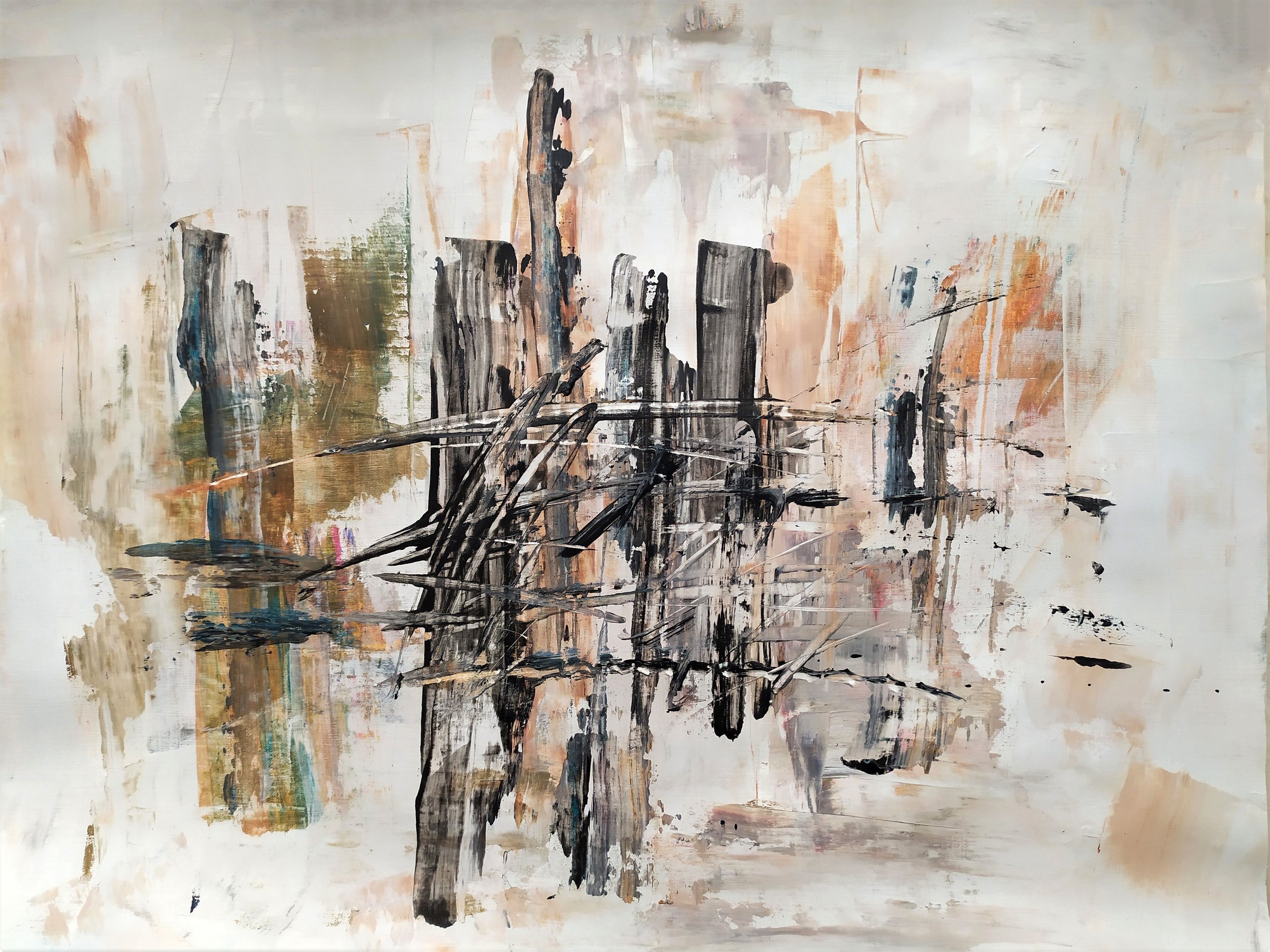
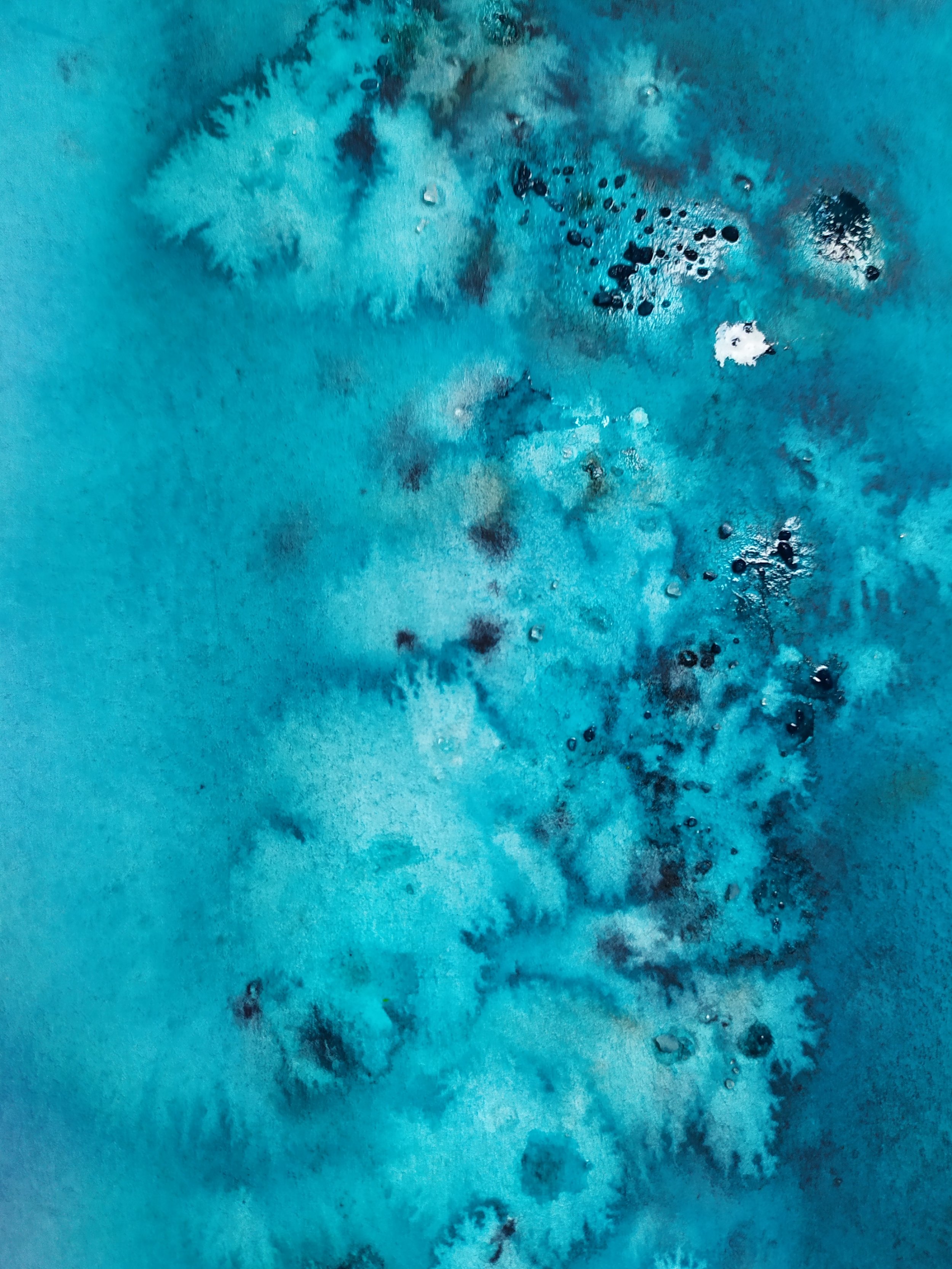


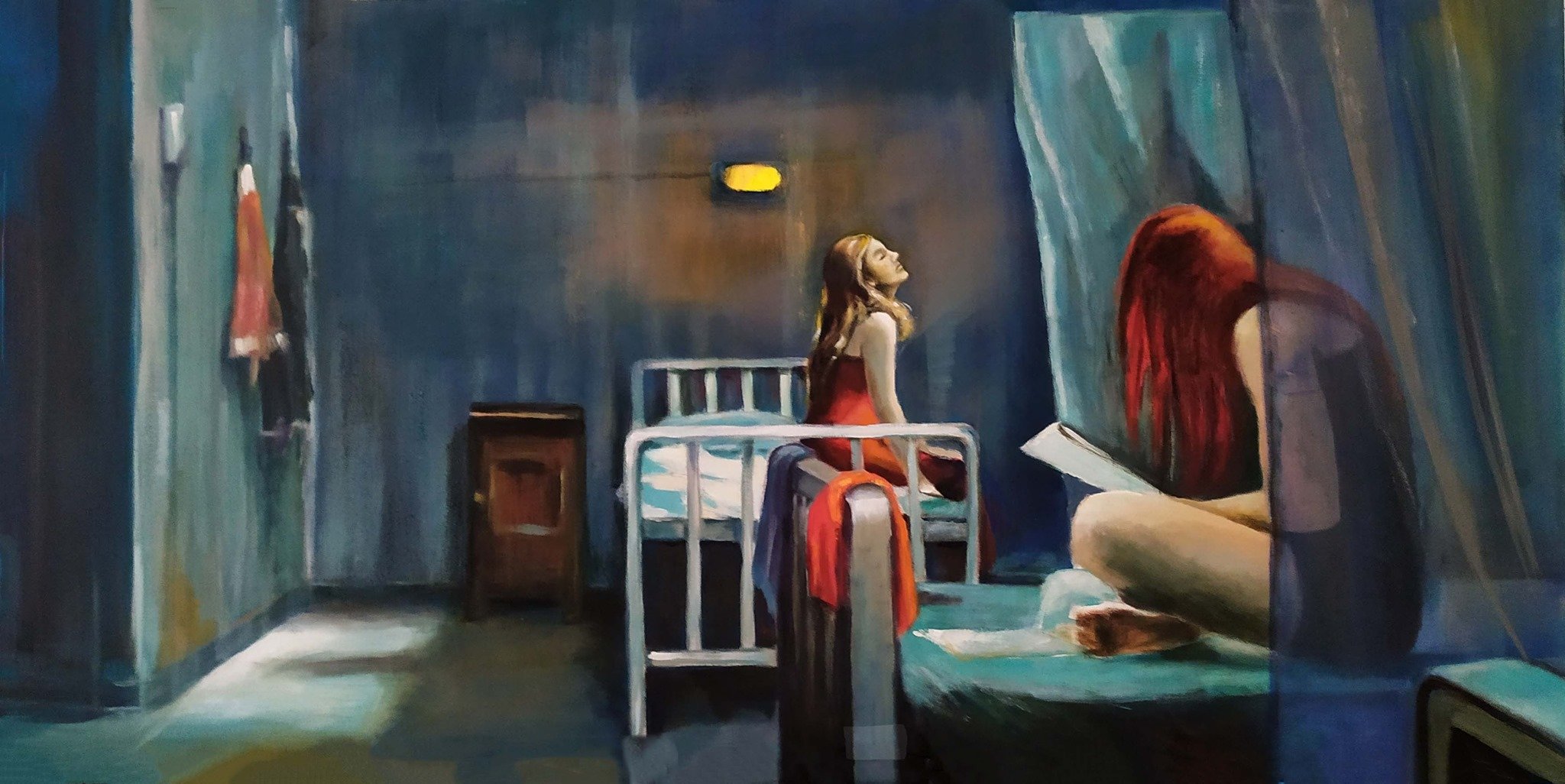
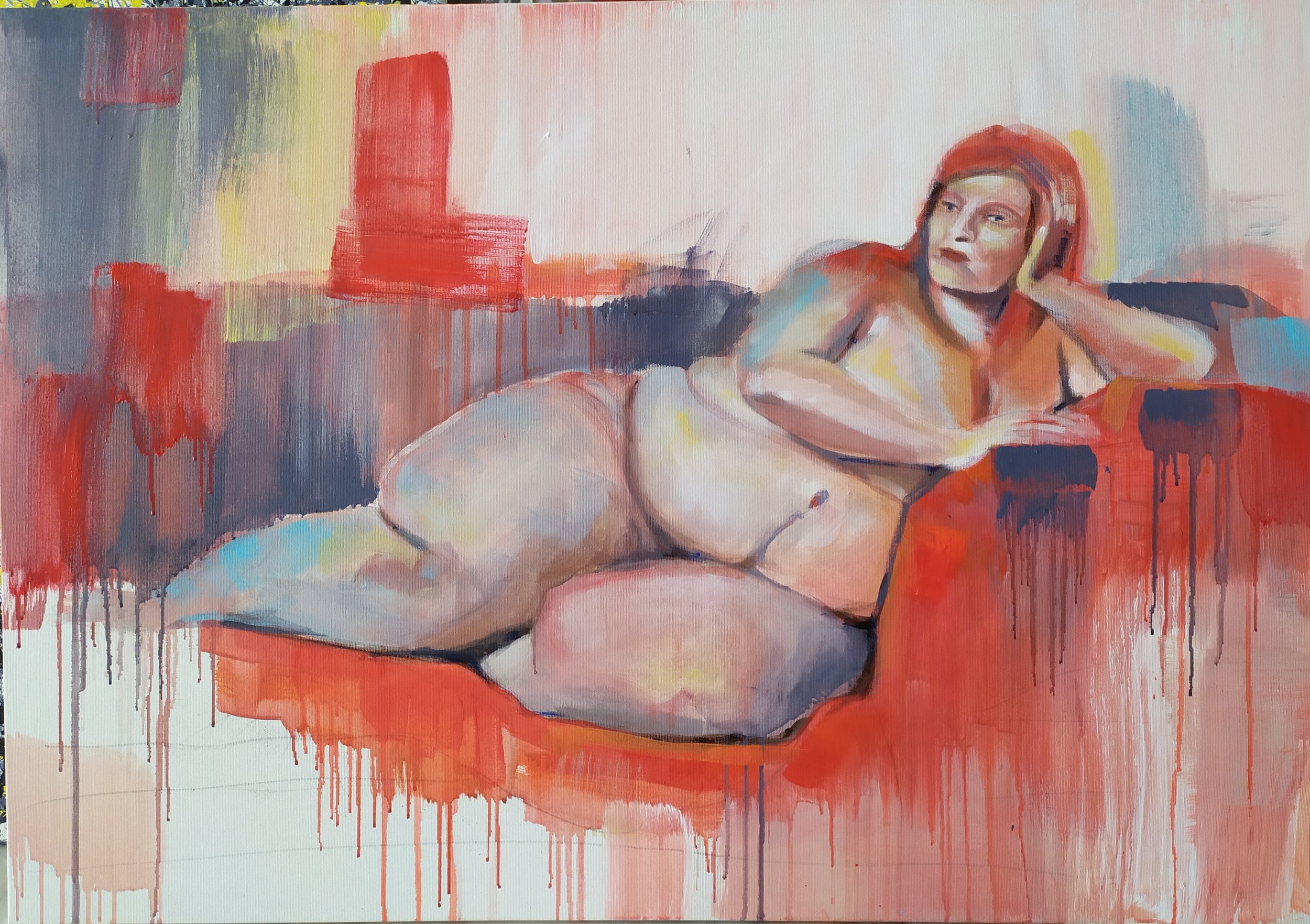
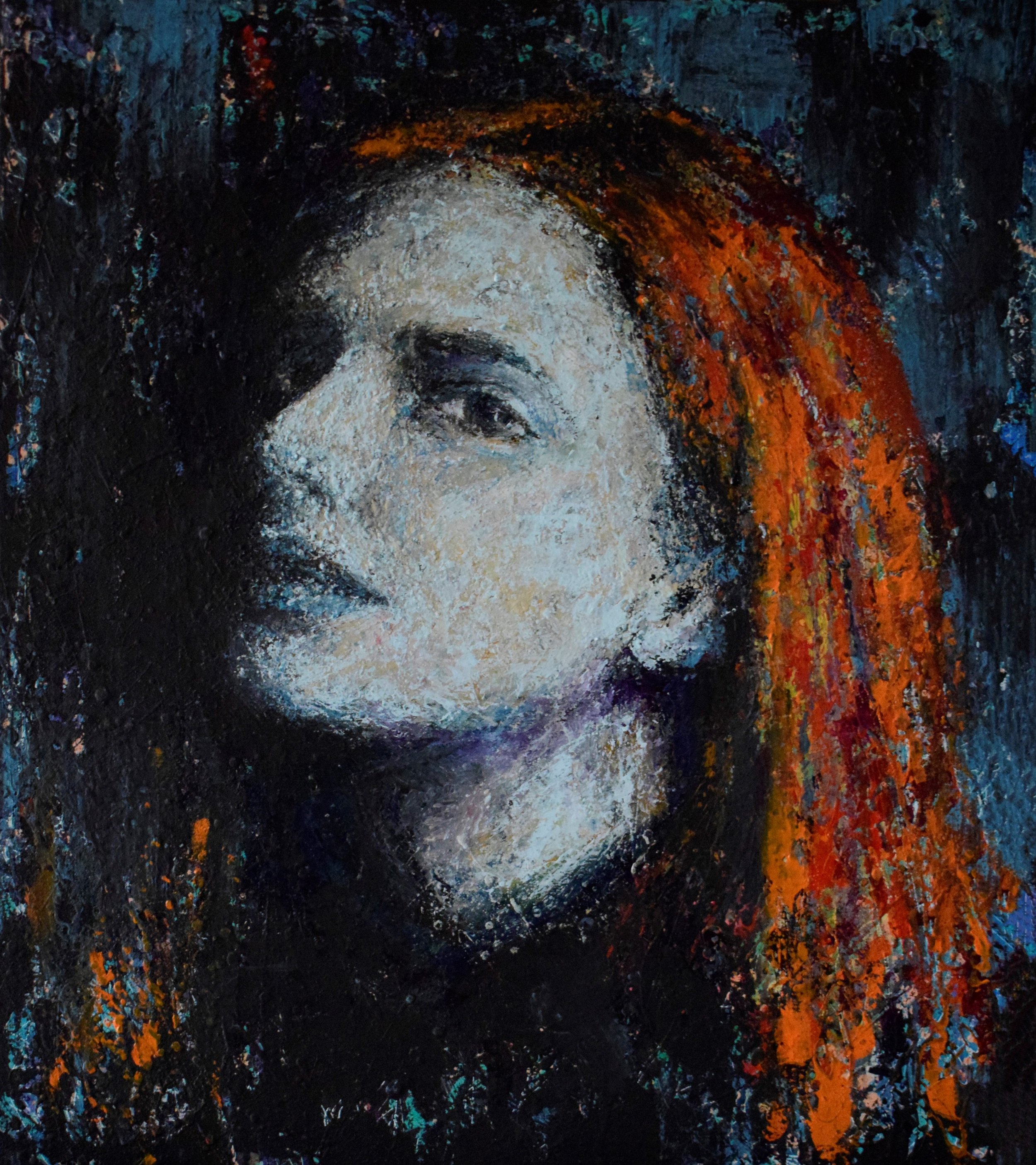
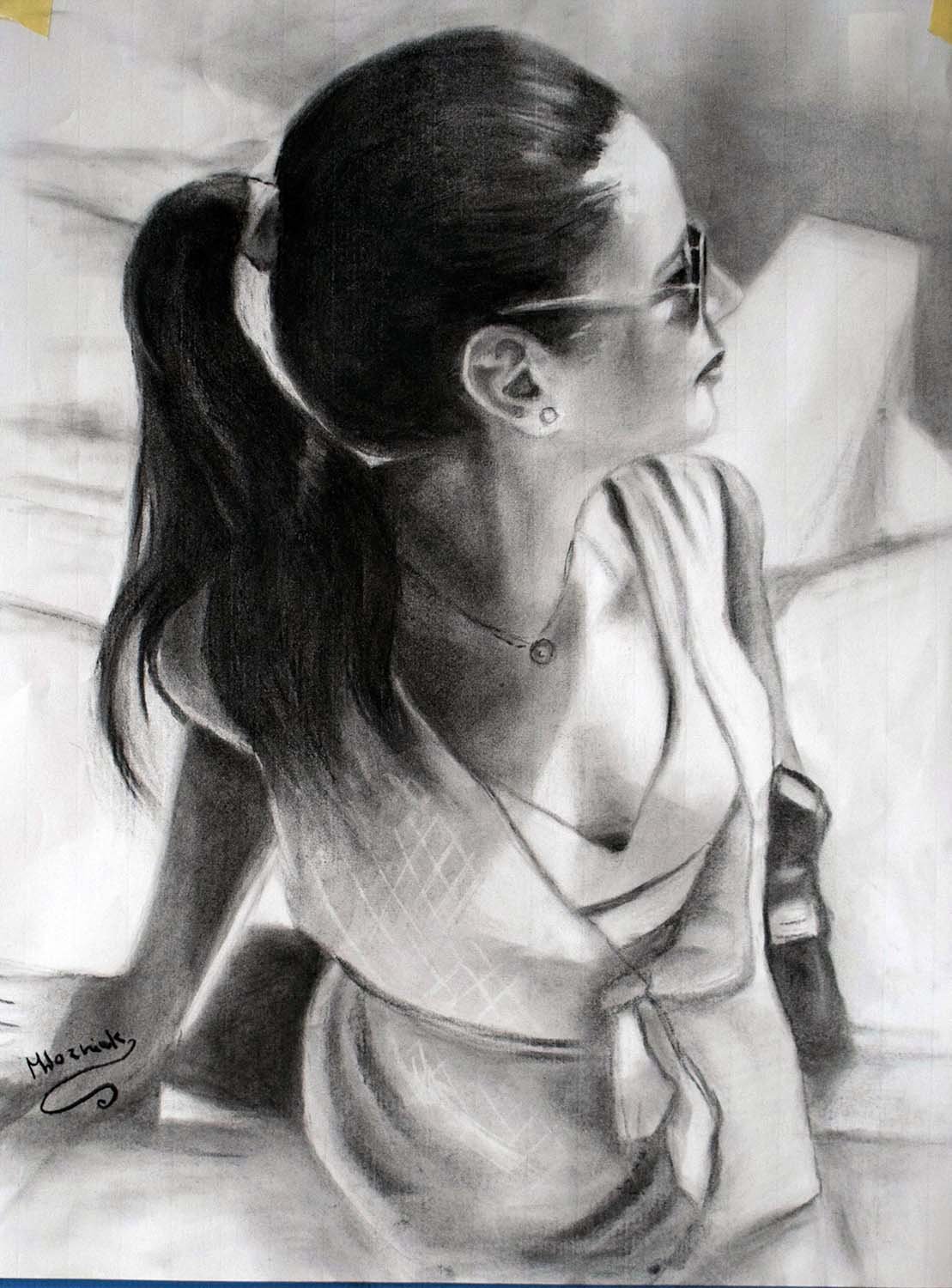
What does your work aim to say? Does it comment on any current social or political issues?
“In my opinion, art is the most universal language in the world, which in history has been used to describe the world around us. Art is the best way to show emotions and it’s how I look at it. In most of my artwork I want to transfer on canvas emotions which accompany me during the painting. First of all, I want to make people feel, and further, to think.
My latest paintings are referring to natural disasters such as earthquakes, which have happened on the island where I live. Many people lost their houses and assets. I also lost my art studio. It was a tough time, during which I decided to concentrate on my artwork. Actually these natural disasters are the topic of my new exhibition. In the exhibition will be an installation which has the goal to explain the phenomenon, emotions and effects of earthquakes.
In my last exhibition, I presented an artwork collection which showed the connection, but also the difference between traditional and modern art. The goal of this collection was to pay attention to emotions, which are the traits of modern art. The paintings were in couples, one was realistic and the other one was a description of feelings. The main theme of the exhibition was dedicated to the metaphor of windows and the light pouring into the dark room. In my work, I used different types of techniques, which influenced different forms of perception from the same window. It was a theme which specifically encouraged the theme of reflection, and made the viewer think about the future. This exhibition served as a key to the imagination and invited the visitors to an amazing journey in their own reflection.”
Which current art world trends are you following?
“I love all the trends, but lately I am more interested in installations, performances and visual art. Also, I have always loved impressionism and geometric abstraction. In my own artworks, I choose the techniques according to my ideas. The life of an artist is a journey, trying many styles and finding new forms of expression which allow them to achieve perfection.”
"Without art, creation and fantasy, life is nothing. Art talks about us and speaks to us! Art is a universal language without words."
Do you plan your work in advance, or is it improvisation?
“I do both. There are moments that I improvise paintings, but for example, when it comes to exhibitions, usually the first painting is improvisation and for the rest I plan my work in advance. I paint under the influence of impetus, but I direct my thinking to specific topics.”
What process, materials, techniques, etc., do you use to create your artwork?
“Everything depends on the type of artistic message which I want to express. Every medium gives a different effect, therefore the artist adjusts it accordingly to canvas or paper to show their feeling in the best way. Art is an international language which doesn’t need words and allows for communication between the artists and the audience. Every symbol, line or spot has a different meaning, which all together have consequences to provide an abundance of information. The compound of techniques and symbols is very fascinating, as every artist always looks for the best way to express themselves by changing styles and techniques. So I feel the need to achieve perfection, and I need to create new things. Doing the same thing all the time doesn’t satisfy me.”
What does your art mean to you?
“Art has multidimensional meaning for me. Simply speaking, art is everything - it’s my child, it’s my life, it’s my emotions and memories. Without art there is no past, present and no future. Life without art doesn’t exist. Art is my big love.”
What’s your favorite artwork and why?
“Two of my favorite artists are Claude Monet and Stratis Athinaios. If I had to choose some artworks there would be Sunrise, The Rouen Cathedral or Houses of Parliament from Monet. The reason why I choose those artworks is that they have a plethora of colors and cause me to feel many emotions. I admire the light which they have, the expression which you can feel in them.”
Have you had any noteworthy exhibitions you'd like to share?
“An exhibition which has always stayed in my memory is Stratis Athinaios. The theme of the exhibition was the problems of aggression in modern society. Many paintings had a task to direct the attention of visitors on this aggression which exists everyday in our close environment: in stores, buses, and on the streets. As people, we stopped caring about this destructive emotion and started to accept it in normal life. It’s easily visible in video games, TV and movies. During this exhibition, many people’s eyes were opened, and they realized many new things about our society.”
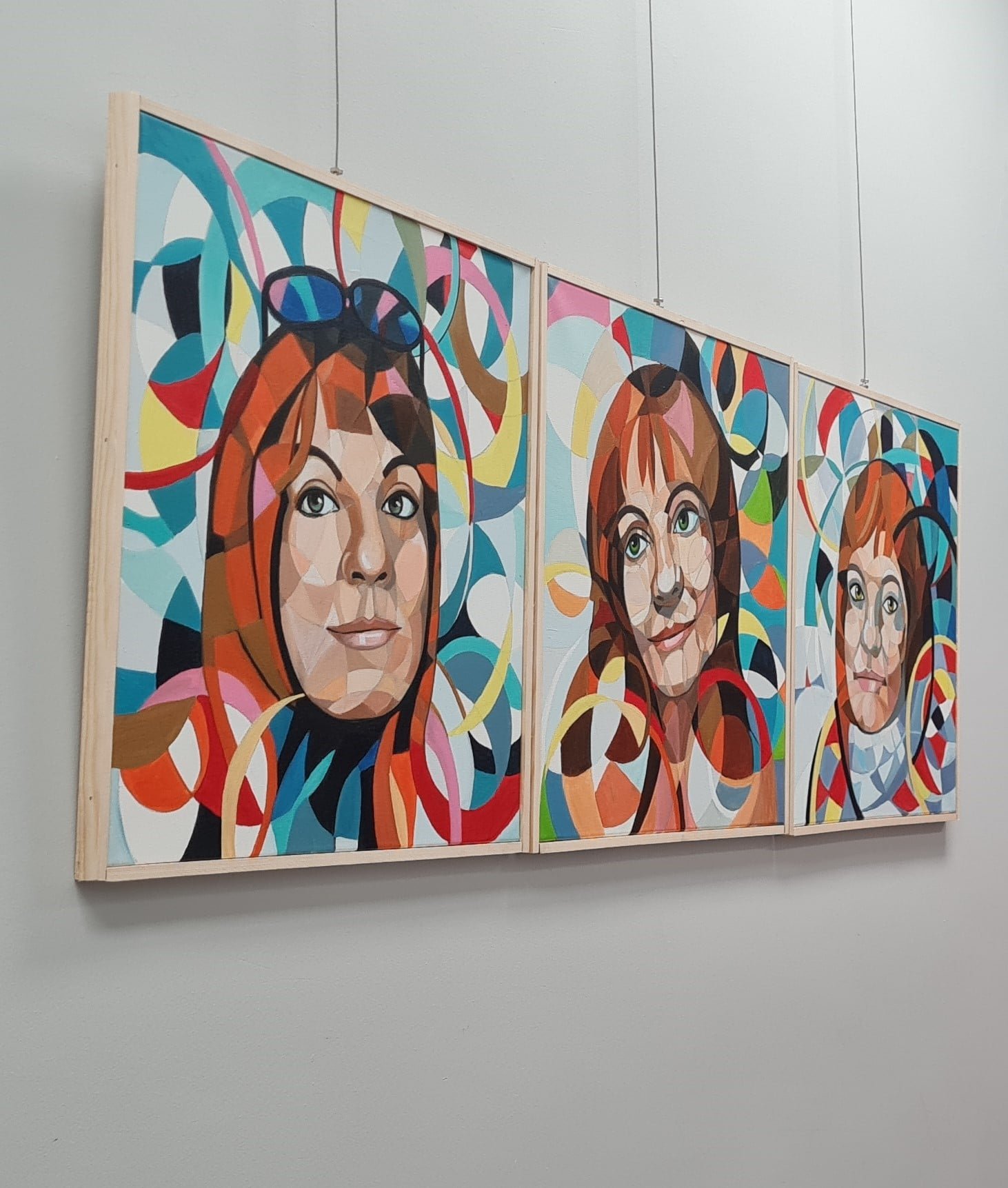
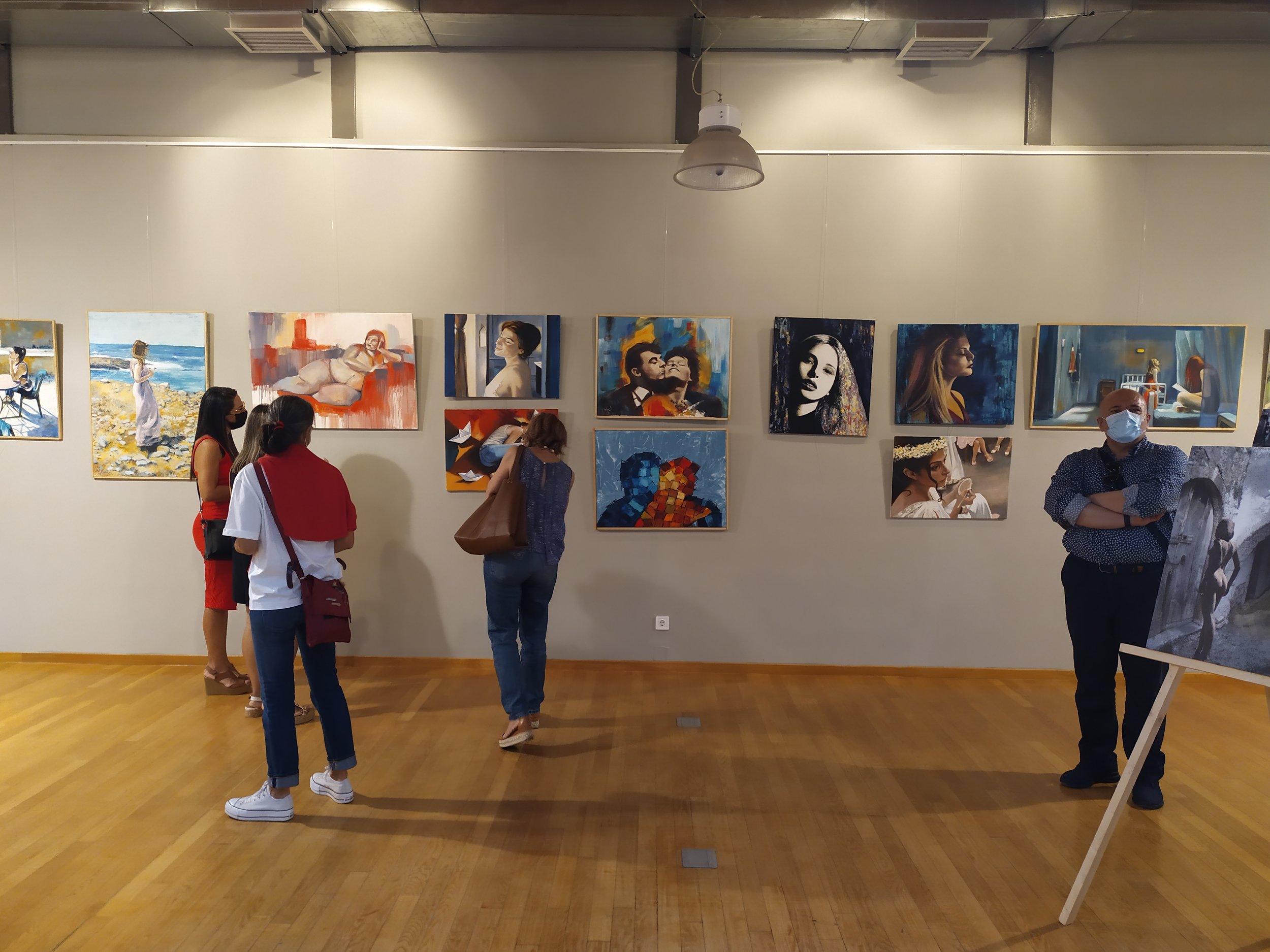
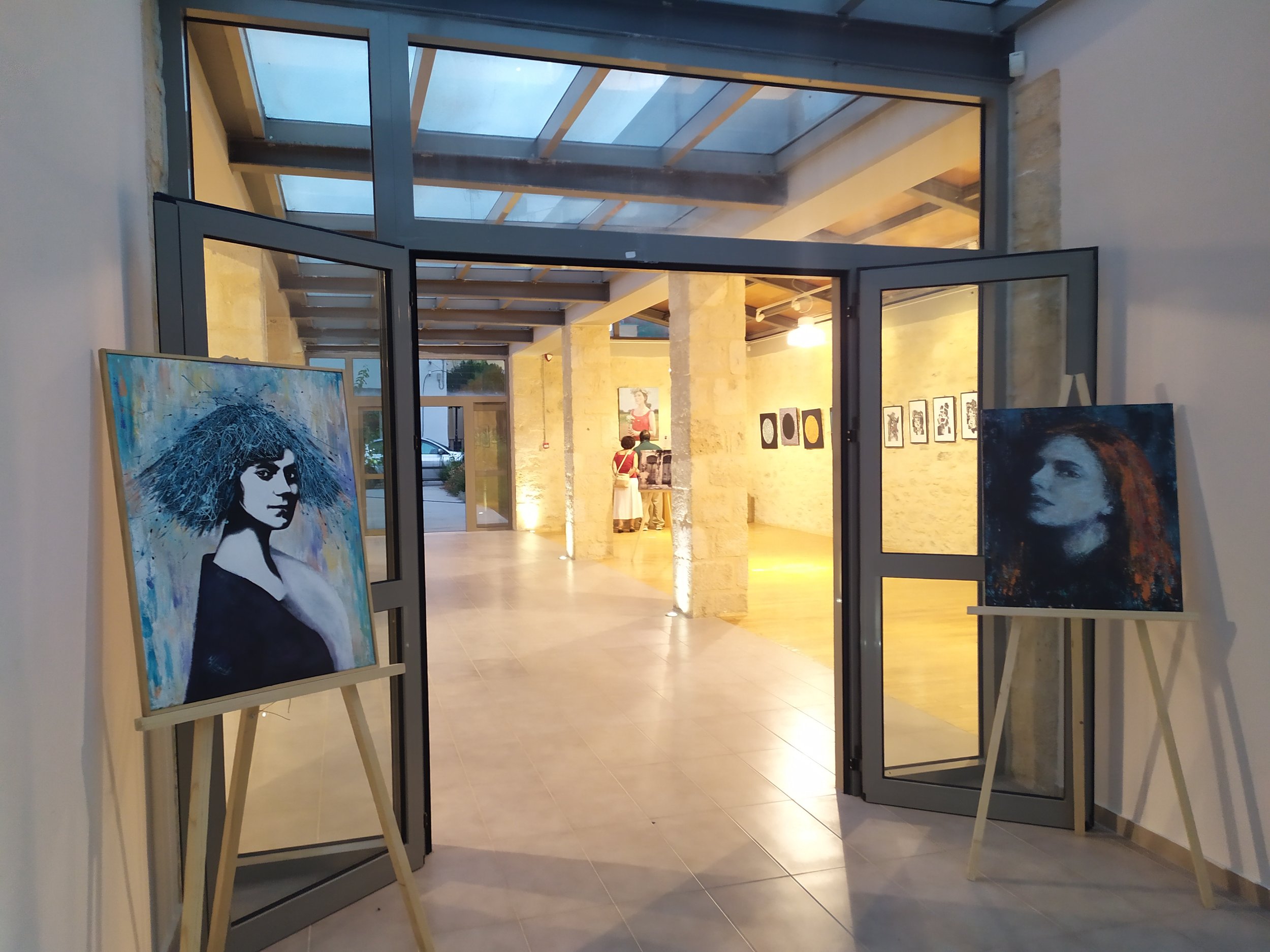
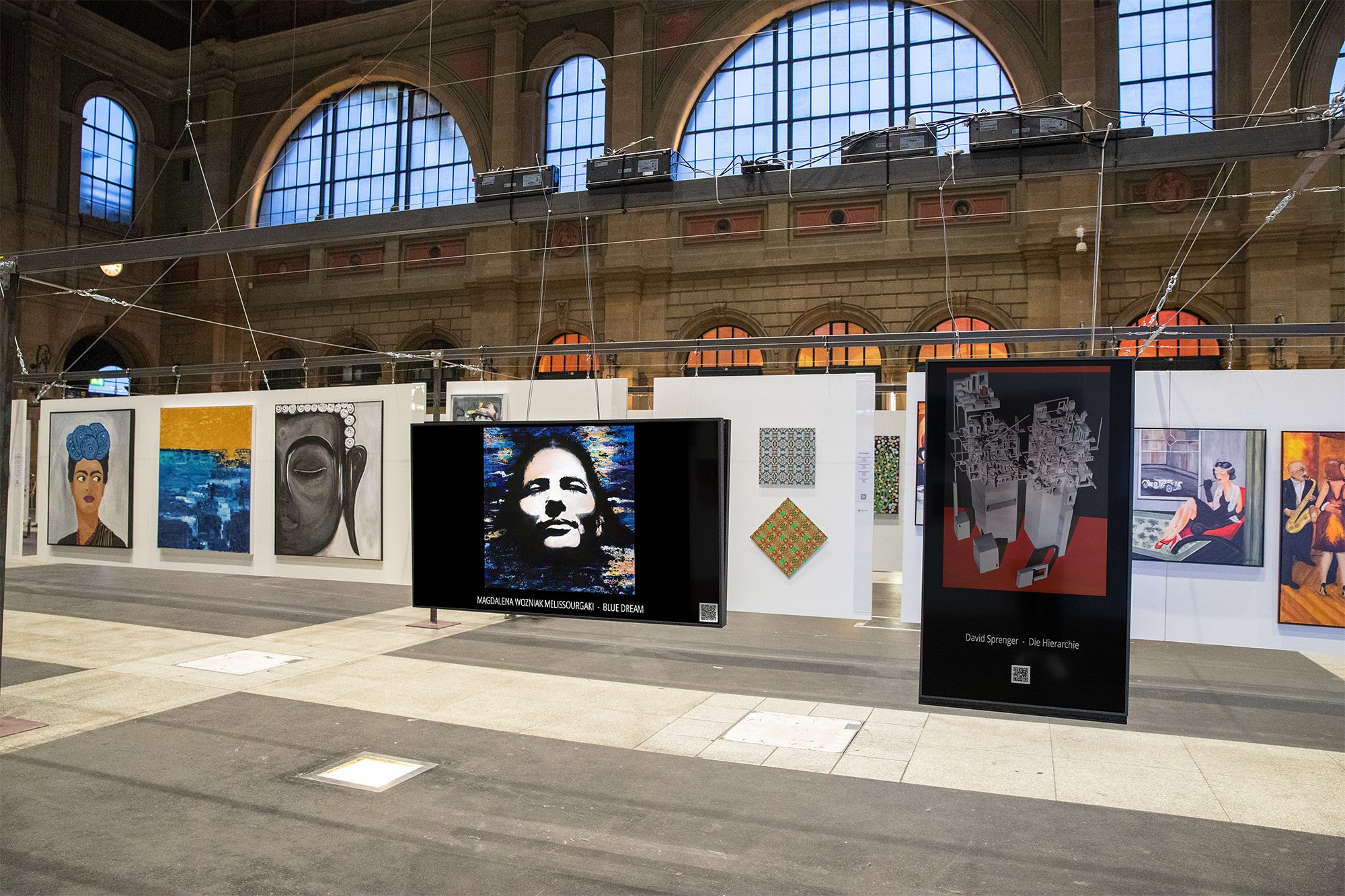
Website: mandalenaw.wixsite.com
Instagram: @magdalenawozniakmelissourgaki
Other: Saatchi Art, Facebook


